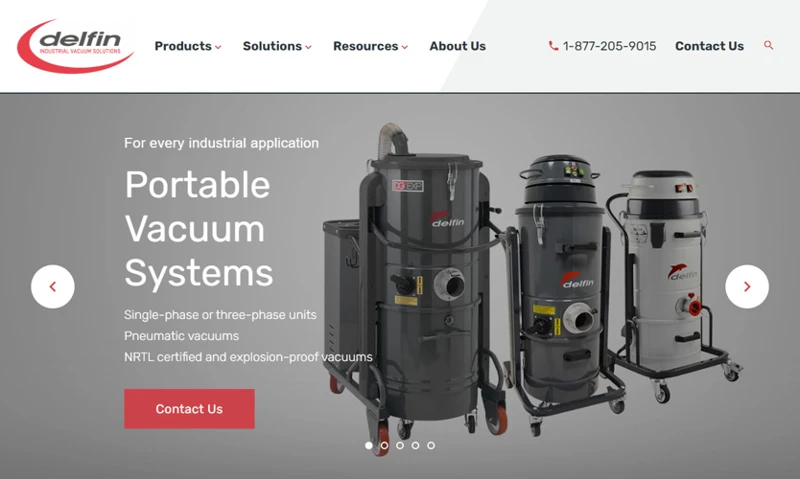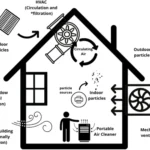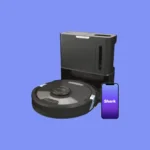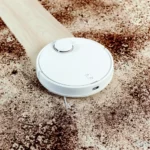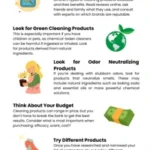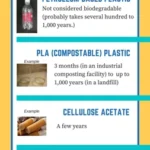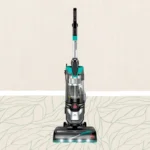As the world becomes more aware of the environmental impact of our daily choices, it’s crucial to consider sustainable options in every aspect of our lives, including home cleaning. Vacuum cleaners are a staple of every household, but the manufacturing process and materials used can have a massive impact on the environment. That’s where eco-friendly vacuum cleaners come in. These next-generation cleaning tools are designed with sustainable materials, reducing their carbon footprint and improving indoor air quality. In this article, we will explore the different types of eco-friendly materials used in vacuum cleaner manufacturing, their advantages, and the challenges manufacturers face in creating these sustainable products.
The Current Scenario of Vacuum Cleaner Manufacturing
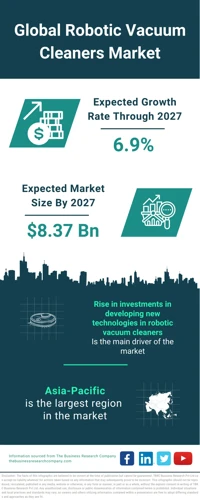
As consumers become more environmentally conscious, eco-friendly vacuum cleaners are becoming increasingly popular. The vacuum cleaner industry has traditionally relied on cheap, disposable materials in their manufacturing, but this approach is not sustainable in the long run. There is a pressing need for more sustainable options, which is why many manufacturers are turning towards eco-friendly materials in their vacuum cleaners. However, there are still challenges associated with producing an eco-material vacuum, including higher manufacturing costs and lower product durability. In this section, we will delve deeper into the current scenario of vacuum cleaner manufacturing and explore the advantages and challenges associated with using eco-friendly materials. We will also discuss the different types of sustainable materials used in vacuum cleaner manufacturing, including bioplastics, recycled plastics, and natural fibers.
The Need for More Sustainable Options
Today, our planet is facing many environmental issues, including climate change, pollution, and resource depletion. One of the main causes of such problems is the use of non-sustainable resources and materials. Vacuum cleaner manufacturing is no exception, and this industry is responsible for a significant amount of plastic waste production, energy consumption, and carbon emissions.
The need for more sustainable options in the vacuum cleaner industry is more critical than ever. With the growing demand for eco-friendly and sustainable products, the vacuum cleaner manufacturing industry needs to consider alternative options that are less harmful to the environment.
The switch to more sustainable materials and design processes is not only an ethical choice but also a practical one. The rising popularity of eco-friendly vacuum cleaners shows that consumers are willing to pay more for products that have less impact on the environment.
But why do we need more sustainable options for vacuum cleaners? The answer is simple: to reduce the negative impact of vacuum cleaner manufacturing on the environment. Below is a table highlighting some of the main reasons for the need for more sustainable options in the vacuum cleaner industry:
| Reasons for the Need for Sustainable Options |
|---|
| Non-sustainable materials used in manufacturing contribute to plastic waste and pollution. |
| Energy and resources required for manufacturing traditional vacuum cleaners emit carbon and contribute to climate change. |
| Consumers are increasingly aware of environmental issues and demand eco-friendly products. |
| Sustainable vacuum cleaners can be cost-effective, have a longer lifespan, and reduce long-term costs and waste. |
The vacuum cleaner industry must continue to innovate for a more sustainable future. More sustainable options are needed to reduce the environmental impact of vacuum cleaner manufacturing, and consumers are more likely to choose eco-friendly products that are cost-effective and have less impact on the planet.
The Advantages of Eco-Friendly Materials
Eco-friendly materials offer several benefits when compared to their traditional counterparts. Here are some of the advantages of using eco-friendly materials in the manufacturing of vacuum cleaners:
- Better for the environment: One of the major advantages of using eco-friendly materials is that they are sustainable and renewable. These materials are not harmful to the environment and they do not contribute to the growing problem of plastic waste. Using eco-friendly materials in vacuum cleaners helps reduce the amount of waste that ends up in landfills and oceans.
- Improved air quality: Eco-friendly materials used in vacuum cleaners release fewer harmful chemicals, ensuring that the air quality in your home remains clean and healthy. Traditional vacuum cleaners release a variety of toxic compounds that can be harmful to your health, especially if you suffer from allergies or asthma.
- Cost-effective: Eco-friendly materials are cost-effective as they are produced using cheaper raw materials, and they produce less waste during manufacturing. This makes them a great option for those looking to save some money in the long run, and also for those looking to reduce their carbon footprint. Plus, with their longer lifespan (discussed later), they are an investment worth making.
- Improved brand reputation: By using eco-friendly materials, vacuum cleaner manufacturers can establish themselves as responsible and sustainable brands, which can lead to an increase in customer loyalty and brand reputation.
- Reduced carbon footprint: Eco-friendly materials help reduce greenhouse gas emission as they require less energy to produce than traditional materials. Choosing a vacuum cleaner made from eco-friendly materials can help reduce your carbon footprint and contribute to a better environment for future generations.
Using eco-friendly materials is beneficial not only for the environment but also for your health and your wallet. So, in the next section, we will explore the different types of sustainable materials available for vacuum cleaner manufacturing.
The Different Types of Eco-Friendly Materials Available Today
Eco-friendly materials are playing a significant role in the manufacturing of household gadgets such as vacuum cleaners. Vacuum cleaners come in contact with various surfaces in a house and could be a source of pollution. The use of eco-friendly materials reduces the carbon footprint and plays an important role in sustainable home cleaning. Some of the different types of eco-friendly materials that are available to manufacturers today are:
| Type of Material | Description |
|---|---|
| Recycled Plastics | Plastics like PET bottles or discarded household plastics, repurposed and used for parts such as casings, nozzles, and reusable dust bags. This helps in reducing landfills and conserving resources. |
| Natural Fibers | Raw materials such as cotton, hemp, and wool are used to create durable components in vacuum cleaners. These materials are biodegradable, easily recyclable, and reduce indoor pollution. |
| Bioplastics | Manufactured from renewable sources such as corn, sugarcane, or potato starch, bioplastics are an excellent alternative to traditional fossil-fuel-based plastics. They break down faster than traditional plastics, reducing the need for landfill space. |
| Bamboo and Other Renewable Resources | Bamboo is a highly renewable resource as it grows back quickly and is easily available. The use of bamboo and other sustainable materials like cork, which are both biodegradable and compostable, reduces the environmental impact of vacuum cleaner manufacturing. |
Each of these materials has its own advantages and contributes to the reduction of environmental damage by the manufacturing industry. With eco-friendly vacuum cleaners, you can now choose materials that are sustainable and reduce pollution in your home. However, the process of selecting the most suitable material is complex and requires a lot of research as each material has its own advantages and disadvantages. To learn more about the differences between bio-plastics and traditional plastics, or the difference between recycled and upcycled materials, read our other detailed articles. Are bio vacuum bags worth it? Read on to learn more about the advantages of eco-friendly vacuum cleaners.
Types of Sustainable Materials Used in Vacuum Cleaner Manufacturing
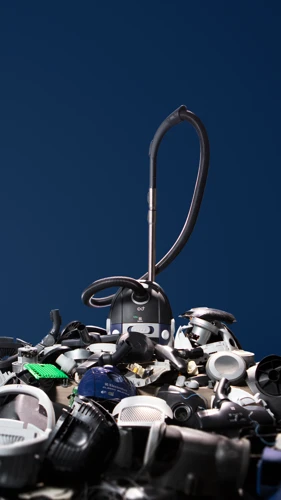
Consumers today are becoming more environmentally conscious and are choosing products that are sustainable and eco-friendly. In response to this, manufacturers are now incorporating sustainable materials into their products, including vacuum cleaners. These materials not only have a lower environmental impact but also offer a slew of benefits like improved air quality in the home, reducing the carbon footprint, and cost-effectiveness. Let’s explore some of the most commonly used sustainable materials in vacuum cleaner manufacturing.
1. Recycled Plastics
Recycled plastics are an eco-friendly option used in the manufacturing of vacuum cleaners for sustainable home cleaning. These plastics are made from post-consumer plastic waste that would otherwise end up in landfills or oceans. The process of converting this waste into recycled plastic requires less energy and resources than producing new plastic.
The advantages of using recycled plastics in vacuum cleaner manufacturing are:
- Reduced Environmental Impact: By using recycled plastics, the need for extracting and refining new raw materials is minimized, reducing carbon emissions and pollution.
- Economic Benefits: Recycling plastic waste creates jobs and can generate revenue for local communities.
- Improved Brand Image: Eco-conscious consumers are increasingly seeking products that align with their values. Using recycled plastic in vacuum cleaners demonstrates a brand’s commitment to sustainability.
However, using recycled plastics in vacuum cleaners does have its challenges:
- Limited Availability: There is a limited supply of recycled plastic available, which can increase costs and affect the scalability of production.
- Quality Concerns: The quality of recycled plastic can vary, affecting the durability and performance of the vacuum cleaner.
- Legal Frameworks and Standards: There is a lack of standardization for the use of recycled plastic in vacuum cleaners, which can affect consumer trust and safety.
Despite these challenges, incorporating recycled plastics in vacuum cleaner manufacturing can contribute to a more sustainable future by reducing waste, minimizing the use of new resources, and generating economic benefits.
2. Natural Fibers
When it comes to sustainable materials used in vacuum cleaner manufacturing, natural fibers are another popular option. These fibers are derived from plant-based sources, making them an excellent eco-friendly alternative to more traditional materials like plastic.
Some examples of natural fibers commonly used in vacuum cleaners include:
- Cotton: This soft and durable fiber is a great replacement for synthetic materials often used in vacuum bags. Not only is cotton biodegradable, but it also has hypoallergenic properties, making it a great option for those with allergies or sensitivities.
- Hemp: Hemp fiber is another popular choice due to its strength and durability. Hemp is also known for its sustainability, as it grows quickly and requires minimal water and pesticides.
- Bamboo: While technically a grass, bamboo fibers are often used in lieu of traditional wood products due to their strength and sustainability. Bamboo is a rapidly renewable resource and requires no fertilizers or pesticides to grow.
- Jute: Jute fibers come from the bark of jute plants and are commonly used in vacuum bags and filters. Jute is biodegradable and compostable, making it an eco-friendly choice for those looking to reduce their environmental impact.
Using natural fibers in vacuum cleaner manufacturing offers numerous benefits. For one, these materials are biodegradable and break down easily without releasing harmful toxins into the environment. Additionally, they often require less energy to produce, as they are derived from renewable sources.
However, it’s important to note that natural fibers can sometimes be more expensive to produce than traditional materials like plastic. Additionally, these materials may not always offer the same durability as their synthetic counterparts, which can be a concern for some consumers.
Natural fibers are a promising option for anyone looking to reduce their environmental footprint while also maintaining a clean home. As technology continues to improve, it’s likely we’ll see more and more vacuum cleaners incorporating sustainable materials into their design.
3. Bioplastics
As we strive for more sustainable options in manufacturing, bioplastics have emerged as a promising alternative to traditional plastics. Bioplastics are made from renewable and natural materials, such as corn starch, vegetable fats and oils, and even algae. They can be molded into many shapes and formed into durable products, making them an excellent choice for vacuum cleaner production.
One of the advantages of using bioplastics is that they are biodegradable, which means they break down naturally in the environment. This helps to reduce the amount of plastic waste that ends up in landfills or oceans, which is a significant issue today. Additionally, bioplastics are made from renewable resources, meaning that they can be replenished over time. This helps to reduce our dependence on non-renewable resources like petroleum.
However, bioplastics also have their own set of challenges. Firstly, they tend to be more brittle than traditional plastics, which can impact the product’s durability and performance. Secondly, the process of manufacturing bioplastics can be more complex and expensive than traditional plastics, making them a less attractive option for some manufacturers. Thirdly, the availability of the raw materials needed to produce bioplastics can also be a limiting factor.
Despite these challenges, many manufacturers are investing in research and development to create more durable and cost-effective bioplastics. As a result, we can expect to see an increase in the use of bioplastics in vacuum cleaner manufacturing in the near future.
Here is a comparison table of the different types of bioplastics used in vacuum cleaner manufacturing:
| Type of Bioplastic | Material Composition | Advantages |
|---|---|---|
| Biodegradable Polyester (Bio-PET) | Cornstarch, sugarcane, or cellulose | Strong, durable, and biodegradable |
| Polylactic Acid (PLA) | Cornstarch, cassava, or sugar cane | Biodegradable, compostable, and heat-resistant |
| Biodegradable Polyurethane (PU) | Corn, soybeans, or castor oil | Flexible, durable, and biodegradable |
The use of bioplastics represents a significant step forward in the production of eco-friendly vacuum cleaners. As more manufacturers invest in research and development, we can expect to see even more sustainable materials being used in the future.
4. Bamboo and Other Renewable Resources
When it comes to eco-friendly vacuum cleaners, manufacturers are increasingly turning towards using renewable resources such as bamboo to make their products. Bamboo is a highly renewable resource that grows quickly and doesn’t require the use of pesticides or fertilizers. Bamboo is incredibly strong and durable, making it a great alternative to traditional plastic components in vacuum cleaners.
Other renewable resources that are being used in the manufacturing of eco-friendly vacuum cleaners include:
| Renewable Resource | Benefits |
|---|---|
| Recycled Plastic | Reduces the need for new plastic production and waste |
| Natural Fibers | Biodegradable and renewable, reducing environmental impact |
| Bioplastics | Made from renewable resources and can biodegrade in certain conditions |
By using these renewable resources in the manufacturing of vacuum cleaners, manufacturers can reduce their carbon footprint and provide consumers with products that are not only good for their homes but also for the environment. However, it is important to note that while these renewable resources offer many advantages, they also come with their own set of challenges. For example, the availability of these materials can be limited and the manufacturing process may be more expensive compared to traditional methods. Manufacturers must also ensure that the performance and durability of these products meet the same standards as traditional vacuum cleaners.
Nevertheless, the use of renewable resources in vacuum cleaner manufacturing is a step in the right direction towards a more sustainable future. Consumers can feel good about knowing that they are doing their part to reduce their impact on the environment by using ecologically responsible cleaning products.
The Advantages of Eco-Friendly Vacuum Cleaners

As we continue our journey to a more sustainable future, it’s important to consider the advantages of eco-friendly vacuum cleaners. By using environmentally conscious materials and practices, these appliances offer a range of benefits. From improving indoor air quality to reducing your carbon footprint, the advantages of these vacuums extend beyond just the cleaning power they provide. Let’s dive into the reasons why you should consider investing in an eco-friendly vacuum for your home or business.
1. Improved Indoor Air Quality
Eco-friendly vacuum cleaners have a significant advantage over their traditional counterparts in terms of improving indoor air quality. Standard vacuum cleaners often release dust particles and pollutants back into the air, leading to allergies and respiratory issues. But with the introduction of eco-friendly vacuum cleaners, this can be easily avoided.
How do eco-friendly vacuum cleaners improve indoor air quality?
- HEPA Filters: Many eco-friendly vacuum cleaners come equipped with HEPA filters that capture dust, pollen, and other airborne irritants, preventing them from circulating in the air. These filters can remove as much as 99.97% of particles from the air, enhancing the overall indoor air quality.
- Low Emissions: Traditional vacuum cleaners release a large amount of pollutants into the air, including carbon monoxide and volatile organic compounds. However, eco-friendly vacuum cleaners have lower emissions, which drastically reduces air pollution, and indoor air quality.
- Advanced Technologies: Some eco-friendly vacuum cleaners come equipped with advanced technologies such as brushless motors and cyclone technology that help to trap dirt and debris within the vacuum, keeping it from escaping back into the air. This improves the overall air quality of your home, making it a healthier place to live.
Eco-friendly vacuum cleaners are an excellent investment for those who are concerned about indoor air quality. By using HEPA filters, reducing emissions, and utilizing advanced technologies, these vacuum cleaners provide a cleaner and healthier air environment for your home, which can make a significant difference in the lives of people suffering from allergies or asthma.
2. Reduced Carbon Footprint
One of the most significant advantages of eco-friendly vacuum cleaners is their reduced carbon footprint. The manufacturing process of conventional vacuum cleaners includes the use of non-recyclable plastics and other materials, which often end up in landfills and contribute to greenhouse gas emissions.
On the other hand, eco-friendly vacuum cleaners are made with sustainable materials that have a lower impact on the environment. Here is a table that shows how different types of vacuum cleaners compare in terms of their carbon footprint:
| Type of Vacuum Cleaner | Carbon Footprint |
|---|---|
| Conventional Vacuum Cleaner | Higher |
| Eco-Friendly Vacuum Cleaner | Lower |
As you can see, eco-friendly vacuum cleaners have a lower carbon footprint than conventional vacuum cleaners. This is because they are made with sustainable materials that have a lower impact on the environment. Additionally, many eco-friendly vacuum cleaners are designed to be energy-efficient, which further reduces their carbon footprint.
By choosing an eco-friendly vacuum cleaner, you can reduce your carbon footprint and contribute to a more sustainable future. You can also show your support for environmentally responsible businesses and help drive the demand for sustainable products.
3. Healthier for Allergies and Asthma Sufferers
Eco-Friendly vacuum cleaners are not only good for the environment, but they are also beneficial for our health, especially for people who suffer from allergies and asthma.
According to studies, indoor air quality can be up to five times worse than outdoor air quality, and poor indoor air quality can exacerbate allergies and asthma symptoms. Traditional vacuum cleaners may contribute to poor indoor air quality by recirculating dust, dirt, and allergens back into the air.
Eco-friendly vacuum cleaners help to improve indoor air quality and reduce allergy and asthma symptoms in several ways, including:
| Ways Eco-friendly Vacuum Cleaners Help Allergies and Asthma | How it works |
|---|---|
| HEPA Filters | A high-efficiency particulate air (HEPA) filter captures up to 99.97% of particles that are 0.3 microns in diameter, including pollen, dust, and pet dander. |
| No Dustbags | Eco-friendly vacuum cleaners that do not use dustbags prevent the release of dust when disposing of the bag, ensuring that the allergens do not escape back into the air. |
| High Suction Power | Vacuum cleaners with high suction power can remove dirt and allergens that are buried deep in carpets and other fabrics. |
| Low Noise Levels | Some eco-friendly vacuum cleaners operate at lower noise levels, reducing stress and anxiety in individuals who suffer from allergies and asthma. |
Additionally, some eco-friendly vacuum cleaners are made with natural fibers or bioplastics, which makes them hypoallergenic and safe for individuals with sensitivities to synthetic materials.
Using eco-friendly vacuum cleaners helps to keep your home clean while also improving air quality and reducing allergy and asthma symptoms. With features like HEPA filters, high suction power, and low noise levels, there are now many eco-friendly options available that are both effective and safe for the most sensitive individuals.
4. Cost-Effective
One of the major advantages of using eco-friendly vacuum cleaners is that they are cost-effective in the long run. While the initial cost of purchasing an eco-friendly vacuum cleaner may be slightly higher than its traditional counterparts, its performance and durability make up for the invested amount.
Let’s take a closer look at the cost-effectiveness of eco-friendly vacuum cleaners in comparison to traditional ones:
| Eco-Friendly Vacuum Cleaner | Traditional Vacuum Cleaner | |
|---|---|---|
| Initial Cost | May be slightly higher due to eco-friendly materials used | Lower initial cost due to conventional materials used |
| Energy Consumption | Uses less energy, resulting in lower electricity bills over time | Consumes more energy, leading to higher electricity bills |
| Maintenance Cost | Requires less maintenance, resulting in lower servicing and repair costs | May require frequent maintenance, increasing servicing and repair costs over time |
| Suction Power | Despite being designed with eco-friendly materials, many models offer powerful suction and cleaning capabilities, resulting in a thorough cleaning of your living space | May offer good suction power at first, but ineffective over time due to clogging and maintenance issues |
As evident from the table above, while the initial investment in an eco-friendly vacuum cleaner may be slightly higher, it offers several long-term cost-saving benefits. From lower electricity bills to lesser maintenance and repair costs, eco-friendly vacuum cleaners are a wise choice for those looking for cost-effective and sustainable cleaning solutions.
5. Longer Life-Span
Eco-friendly vacuum cleaners offer a longer lifespan compared to traditional vacuum cleaners. This factor makes them an economical choice for families and individuals looking to save money on home maintenance costs. The following table compares the lifespan of eco-friendly and traditional vacuum cleaners:
| Eco-Friendly Vacuum Cleaners | Traditional Vacuum Cleaners | |
|---|---|---|
| Lifespan | Eco-friendly vacuum cleaners have a longer lifespan compared to traditional vacuum cleaners. With proper maintenance, they can last for up to 10 years or more. | Traditional vacuum cleaners have a shorter lifespan and may only last for 3-5 years with regular use. |
| Maintenance | Eco-friendly vacuum cleaners require less maintenance as they are built with high-quality and durable materials. | Traditional vacuum cleaners require regular maintenance to keep them functioning properly. |
| Cost | While eco-friendly vacuum cleaners may have a higher upfront cost, their longer lifespan makes them a cost-effective choice. | Traditional vacuum cleaners may have a lower upfront cost, but their shorter lifespan means that they may need to be replaced more frequently, resulting in higher overall costs. |
A longer lifespan also means that eco-friendly vacuum cleaners contribute less to landfill waste, making them a more sustainable choice for the environment. With proper maintenance and care, eco-friendly vacuum cleaners maintain their cleaning power, making them a reliable tool for convenient and effective home cleaning.
The Challenges of Manufacturing Eco-Friendly Vacuum Cleaners
As with any new technology, eco-friendly vacuum cleaners face their own set of challenges in the manufacturing process. Despite the many advantages and benefits they offer, companies must overcome several hurdles in order to bring these sustainable options to market. From a lack of raw materials to higher manufacturing costs, there are many factors that make producing eco-friendly vacuums more difficult than their traditional counterparts. In this section, we will explore these challenges in depth, and discuss potential solutions for overcoming them.
1. Availability of Raw Materials
One of the biggest challenges in manufacturing eco-friendly vacuum cleaners is the availability of raw materials. Unlike traditional vacuum cleaners, which rely heavily on non-renewable materials such as plastics and metals, eco-friendly vacuums use sustainable alternatives like recycled plastics, bioplastics, natural fibers, and bamboo.
However, these materials are not always readily available in large quantities. Recycled plastics, for example, depend on the availability of used plastic waste, which may not be ubiquitous. Bioplastics, while a promising alternative to traditional petroleum-based plastics, are still in the nascent stages of development and may not be commercially viable yet.
Natural fibers, such as wool and cotton, are also sustainable options, but they may not be suitable for some parts of a vacuum cleaner, such as the brush roll or the belt. Similarly, bamboo and other renewable resources may not be able to withstand the wear and tear of heavy usage, making them impractical for certain vacuum components.
To overcome these challenges, vacuum cleaner manufacturers need to work closely with suppliers and invest in research and development. They also need to explore new and innovative materials that are sustainable, durable, and cost-effective.
Governments and regulatory bodies can provide incentives and support to manufacturers who adopt sustainable production practices, making it easier for them to source eco-friendly materials and scale up their operations. While availability of raw materials poses a challenge, there are ways to overcome this and move towards a more sustainable future for cleaning our homes.
Here are some key points:
- Eco-friendly vacuums use sustainable materials like recycled plastics, bioplastics, natural fibers, and bamboo.
- Availability of raw materials is a significant challenge in manufacturing eco-friendly vacuum cleaners.
- Recycled plastics may not be readily available in large quantities.
- Bioplastics are still in the early stages of development and may not be commercially viable yet.
- Natural fibers and bamboo may not be durable enough for some vacuum components.
- Manufacturers need to work closely with suppliers and invest in R&D to overcome these challenges.
- Governments and regulatory bodies can provide incentives and support for sustainable production practices.
2. Higher Manufacturing Costs
Manufacturing eco-friendly vacuum cleaners can be a costly affair as compared to traditional models. While using sustainable materials such as recycled plastics, bioplastics, and natural fibers may help in reducing the environmental impact, it increases the manufacturing costs considerably.
The use of sustainable materials: Eco-friendly vacuum cleaners require high-quality sustainable materials. These materials are often more expensive to source as compared to traditional materials. For example, recycled plastics, natural fibers, and renewable resources such as bamboo are priced higher than regular plastics and other raw materials.
Research and Development Costs: In addition to sourcing the materials, the manufacturing process of eco-friendly vacuum cleaners involves extensive research and development costs, which can be relatively expensive. Researchers need to explore and develop new techniques to use sustainable materials effectively without harming the environment.
Lower production volumes: Since eco-friendly vacuum cleaners are still a comparatively niche market, the production volumes remain relatively lower compared to traditional models. The lack of economies of scale makes the manufacturing costs higher.
Marketing Costs: Innovation in eco-friendly vacuum cleaners is relatively new, and customer education about the benefits of these vacuum cleaners requires extensive marketing campaigns. The costs associated with such campaigns can be substantial, driving the overall cost of manufacturing higher.
Cost of Compliance: There are several regulations and standards that eco-friendly vacuum cleaners need to comply with before they can be sold in the market. Testing and certification can be an expensive affair, adding to the overall manufacturing cost.
| Cost Factors | Description |
|---|---|
| Sustainable Materials | More expensive than traditional materials |
| Research and Development | Costs associated with developing new techniques to use sustainable materials effectively |
| Production Volumes | Lower production volumes due to niche market |
| Marketing | Costs of extensive marketing campaigns due to new innovation in the market |
| Compliance | Testing and certification expenses to comply with regulations and standards |
While the manufacturing costs of eco-friendly vacuum cleaners may be higher, the benefits of using them for the environment and indoor air quality are significant. As the demand for sustainable products increases, the production costs are expected to come down, making them more affordable and accessible to the average consumer.
3. Lower Product Durability and Performance
One of the major challenges faced by manufacturers of eco-friendly vacuum cleaners is the lower durability and performance of these products compared to traditional vacuum cleaners. While sustainable materials like recycled plastics or natural fibers are beneficial for the environment, they may not always be as strong and durable as traditional plastic materials.
Some of the reasons behind lower product durability and performance are:
- Weaker Materials: Sustainable materials like natural fibers and bioplastics may not be as strong as traditional plastic. These materials can easily break or wear out, resulting in a shorter product lifespan.
- Less Testing: Sustainable vacuum cleaners are a relatively new concept, and there is limited data available regarding their durability and performance. Manufacturers may not have conducted rigorous testing before launching their eco-friendly products into the market.
- Complex Construction: Eco-friendly vacuum cleaners often include additional components and features to reduce environmental impact. For example, a vacuum cleaner designed to use less energy may require a more complex motor and air filtration system. This complexity can reduce the overall durability of the product.
- Higher Price: Manufacturing sustainable vacuum cleaners can be more expensive due to the use of eco-friendly materials, additional components, and lower economies of scale. Manufacturers may reduce costs by compromising on the strength and durability of the product.
Despite the challenges of lower product durability and performance, eco-friendly vacuum cleaners have several advantages, as discussed earlier. It’s essential for manufacturers to balance these benefits with product quality and lifespan. With increased awareness and demand for sustainable home cleaning products, manufacturers are likely to invest more in research and development to overcome these challenges and create long-lasting eco-friendly vacuum cleaners that meet consumer needs.
4. Lack of Legal Frameworks and Standards
The lack of legal frameworks and standards is a major challenge in the manufacturing of eco-friendly vacuum cleaners. While there is growing demand for sustainable products, there is no universal set of guidelines or regulations in place to ensure that manufacturers are using environmentally-friendly materials in their products.
This lack of legal framework and standardization has a variety of negative effects:
- It creates confusion among consumers who are trying to make informed choices about the products they buy.
- Manufacturers may prioritize profits over sustainability, as there is no legal requirement to use eco-friendly materials in their products.
- Without a standard definition of what constitutes an eco-friendly vacuum cleaner, companies may make false or misleading claims about the environmental benefits of their products.
The solution to this issue is clear: governments and regulatory bodies need to establish clear standards and guidelines for eco-friendly vacuum cleaners. This would ensure that products labeled “eco-friendly” or “sustainable” are held to a universal set of standards and guidelines, and are not simply marketing ploys.
In the absence of such standards, consumers can take steps to ensure that the vacuum cleaners they buy are eco-friendly:
- Research different brands and manufacturers to learn about their sustainability practices and materials used.
- Look for third-party certifications, such as the Forest Stewardship Council or the Rainforest Alliance, which indicate that a product has met certain environmental standards.
- Choose vacuum cleaners made from recycled materials or natural fibers, as these materials are generally more sustainable than traditional plastics.
Ultimately, the lack of legal frameworks and standards is hindering the widespread adoption of eco-friendly vacuum cleaners, but with greater awareness and regulation, this trend is sure to change.
Conclusion
In conclusion, it can be stated that eco-friendly vacuum cleaners are the future of sustainable home cleaning. With the rise in environmental concerns and awareness, people are understanding the importance of using products that are gentle on the planet. Vacuum cleaner manufacturers are starting to shift towards using more sustainable materials in their products to meet the growing demand for eco-friendly cleaning solutions.
The Advantages of Eco-Friendly Vacuum Cleaners
Eco-friendly vacuum cleaners offer numerous benefits over traditional counterparts. They are not only better for the environment, but also for human health. The use of sustainable materials in the manufacturing process of these cleaners results in improved indoor air quality, reduced carbon footprint, and is healthier for allergies and asthma sufferers.
The Challenges of Manufacturing Eco-Friendly Vacuum Cleaners
The biggest challenge in manufacturing eco-friendly vacuum cleaners is the availability of raw materials. Sustainable materials are not as easily available as traditional materials. It results in higher manufacturing costs, lower durability, and performance. Another challenge is the lack of legal frameworks and standards, making it difficult for manufacturers to ensure the quality and safety of their eco-friendly products.
The Way Forward
To overcome these issues, there needs to be more research and development of sustainable materials, which can be used in the manufacturing of vacuum cleaners. Government and non-government organizations can provide financial incentives, tax credits, and other support to encourage manufacturers to adopt eco-friendly materials. With the continuous improvement in sustainable technology, it is highly likely that the eco-friendly options will become the norm in the near future.
Final Thoughts
As consumers, we have the power to demand better, more sustainable products. Choosing eco-friendly vacuum cleaners can be a simple yet significant step in reducing our impact on the planet. By opting for eco-friendly products, we can contribute to a cleaner and healthier environment for ourselves and future generations. The time to act is now.
Frequently Asked Questions
What makes a vacuum cleaner eco-friendly?
An eco-friendly vacuum cleaner uses materials and technology that reduce its impact on the environment. This includes using sustainable materials, energy efficiency, and minimizing carbon emissions.
What are the different types of sustainable materials used in vacuum cleaners?
The most common eco-friendly materials used in vacuum cleaners include recycled plastics, natural fibers, bioplastics, and renewable resources like bamboo.
Are eco-friendly vacuum cleaners more expensive?
In general, eco-friendly vacuum cleaners may be more expensive than traditional models, but they typically have a longer lifespan and can save on energy costs in the long run.
How do eco-friendly vacuum cleaners improve indoor air quality?
Eco-friendly vacuum cleaners often have advanced filtration systems that capture microscopic particles, such as dust and allergens, that would otherwise be released back into the air. This can improve the air quality in your home and reduce allergens.
Can eco-friendly vacuum cleaners help reduce my carbon footprint?
Yes, eco-friendly vacuum cleaners typically use less energy and produce fewer emissions compared to traditional models. This can help reduce your carbon footprint and contribute to a more sustainable future.
Do eco-friendly vacuum cleaners have a lower performance than traditional models?
The performance of eco-friendly vacuum cleaners can vary depending on the specific model, but many are designed with advanced technology that provides strong suction and efficient cleaning.
Can I recycle an old vacuum cleaner?
Many vacuum cleaners contain materials that can be recycled, such as plastics and metals. Contact your local recycling center to inquire about their policies on recycling electronics.
Are there any legal frameworks or standards for eco-friendly vacuum cleaners?
There are some standards and certifications that eco-friendly vacuum cleaner manufacturers can pursue, such as ENERGY STAR and Cradle to Cradle Certification. However, there is no universal legal framework for eco-friendly products.
How can I maximize the lifespan of my eco-friendly vacuum cleaner?
To maximize the lifespan of your eco-friendly vacuum cleaner, clean or replace the filters regularly, empty the dustbin after each use, and store the vacuum in a cool and dry place.
What should I do with a vacuum cleaner that no longer works?
If your vacuum cleaner is no longer working, check if it can be repaired. If not, contact your local electronics recycling center to dispose of it properly and avoid contributing to electronic waste. Some retailers also offer recycling programs for old electronics.
